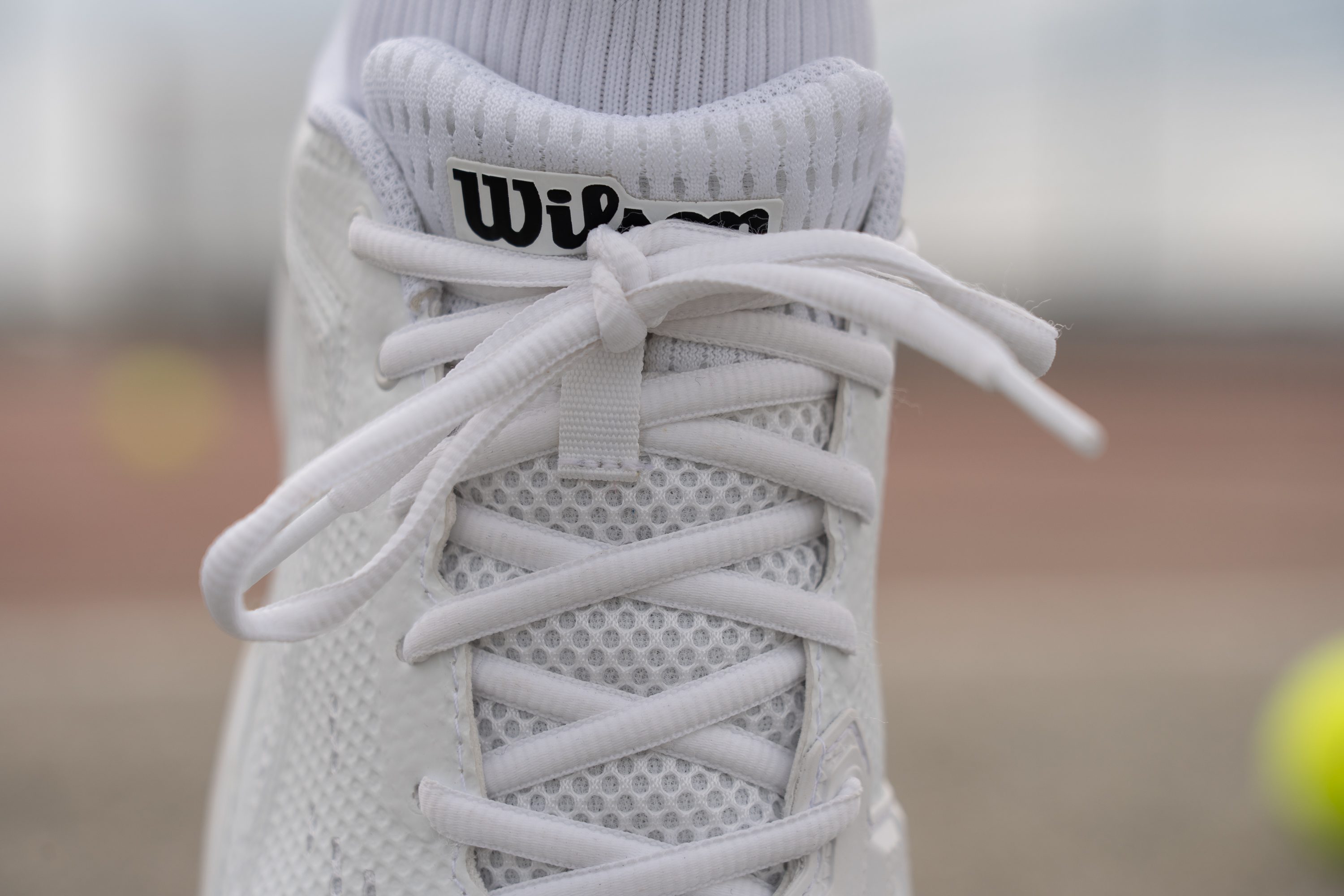Our verdict
- Top pick in best tennis shoes
- Top pick in best cheap tennis shoes
Pros
- Excellent value for money
- Solid lateral support and stability
- Good impact protection
- Very durable rubber for the price
- Balanced outsole grip and give
- Accommodating toebox
- Comfortable padded interiors
Cons
- Not so breathable
- Frail upper materials and laces
Audience verdict
Comparison
The most similar tennis shoes compared
+ + Add a shoe | |||||
|---|---|---|---|---|---|
| Audience score | 88 Great! | 86 Great! | 84 Good! | 86 Great! | |
| Price | £100 | £110 | £70 | £140 | |
| Shoe type | All Court | All CourtHard Court | All Court | All CourtHard Court | |
| Shock absorption | Low | High | Low | - | |
| Energy return | Moderate | Low | High | - | |
| Traction | Moderate | Moderate | Moderate | - | |
| Construction | Speed | Speed | Stability | Stability | |
| Breathability | Moderate | Moderate | Moderate | Warm | |
| Weight lab | 12.6 oz / 357g | 12.2 oz / 347g | 12.8 oz / 363g | 12.9 oz / 367g | |
| Lightweight | ✗ | ✓ | ✗ | ✗ | |
| Drop lab | 9.4 mm | 11.8 mm | 9.5 mm | 9.1 mm | |
| Width / fit | Medium | Medium | Wide | Medium | |
| Toebox width | Wide | Medium | Medium | Medium | |
| Size | True to size | True to size | Half size small | True to size | |
| Midsole softness | Balanced | Balanced | Balanced | Balanced | |
| Stiffness | Moderate | Flexible | Moderate | Stiff | |
| Torsional rigidity | Moderate | Moderate | Stiff | Moderate | |
| Heel counter stiffness | Moderate | Moderate | Moderate | Stiff | |
| Midsole width - forefoot | Average | Average | Average | Average | |
| Midsole width - heel | Average | Average | Wide | Average | |
| Outsole durability | Decent | Good | Decent | Decent | |
| Heel padding durability | Bad | Good | Good | Bad | |
| Heel stack lab | 28.9 mm | 28.8 mm | 28.5 mm | 29.1 mm | |
| Forefoot | 19.5 mm | 17.0 mm | 19.0 mm | 20.0 mm | |
| Insole thickness | Thin | Thick | Average | Thin | |
| Removable insole | ✓ | ✓ | ✓ | ✓ | |
| Heel tab | None | Extended heel collar | None | None | |
| Toebox durability | Decent | Good | Good | Good | |
| Outsole hardness | Average | Average | Hard | Average | |
| Outsole thickness | Average | Thin | Very thick | Average | |
| Ranking | #13 Top 34% | #16 Top 42% | #22 Bottom 43% | #18 Top 47% | |
| Popularity | #18 Top 47% | #22 Bottom 43% | #12 Top 31% | #38 Bottom 2% |
Who should buy
The Wilson Rush Pro Ace is a must to consider if you are after the following:
- a solid entry-level shoe that doesn't feel cheap
- a very comfortable and well-rounded hard court option
- a bit more space in a tennis shoe toebox
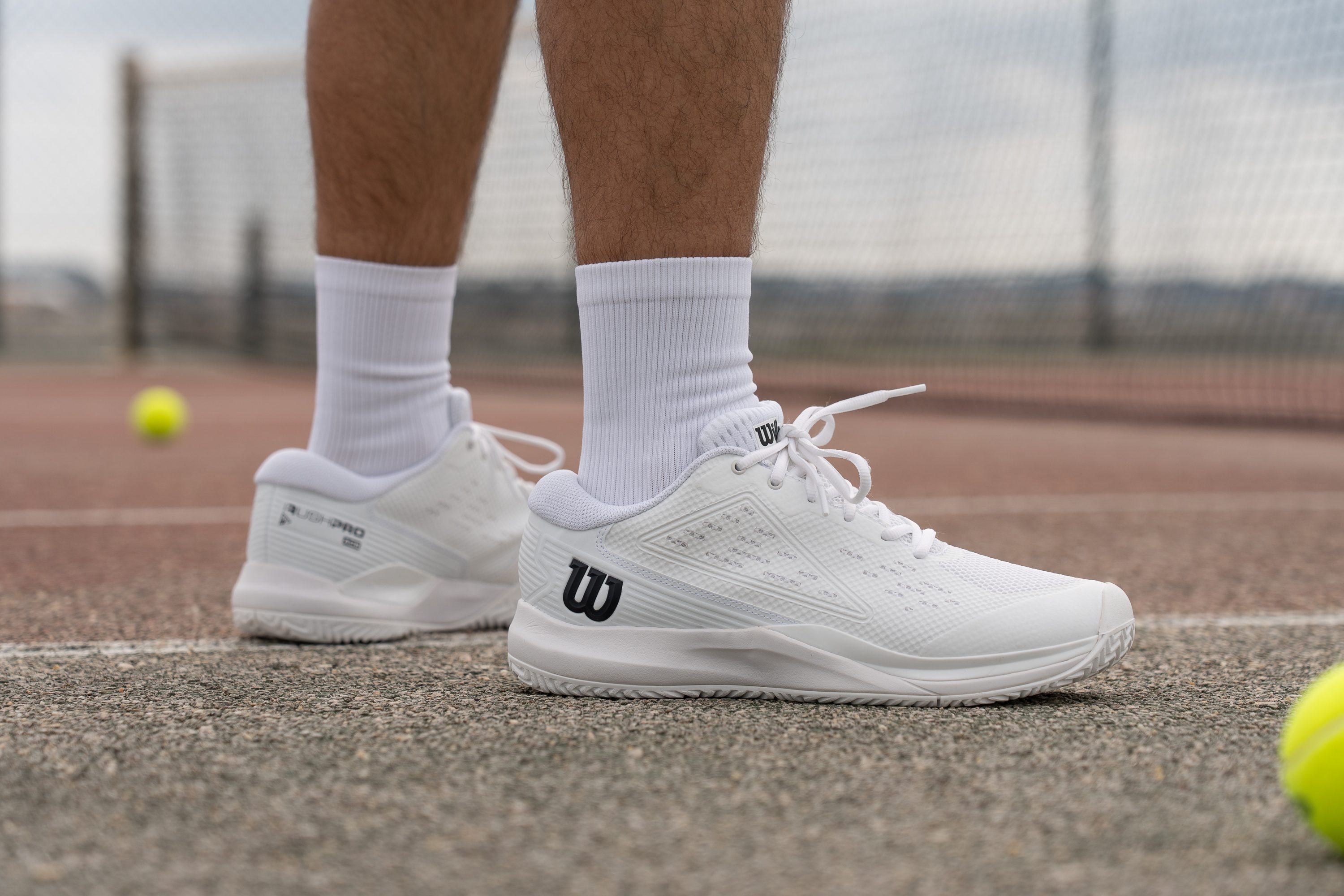
Who should NOT buy
It's hard to give any harsh criticism to a budget-friendly shoe that ticks all the essential boxes and doesn't have any glaring drawbacks.
But you may benefit from alternative options if the following is crucial to you:
- maximum torsional rigidity (see the ASICS Gel Challenger 14)
- even more toe room for very wide feet (try the K-Swiss Hypercourt Express 2)
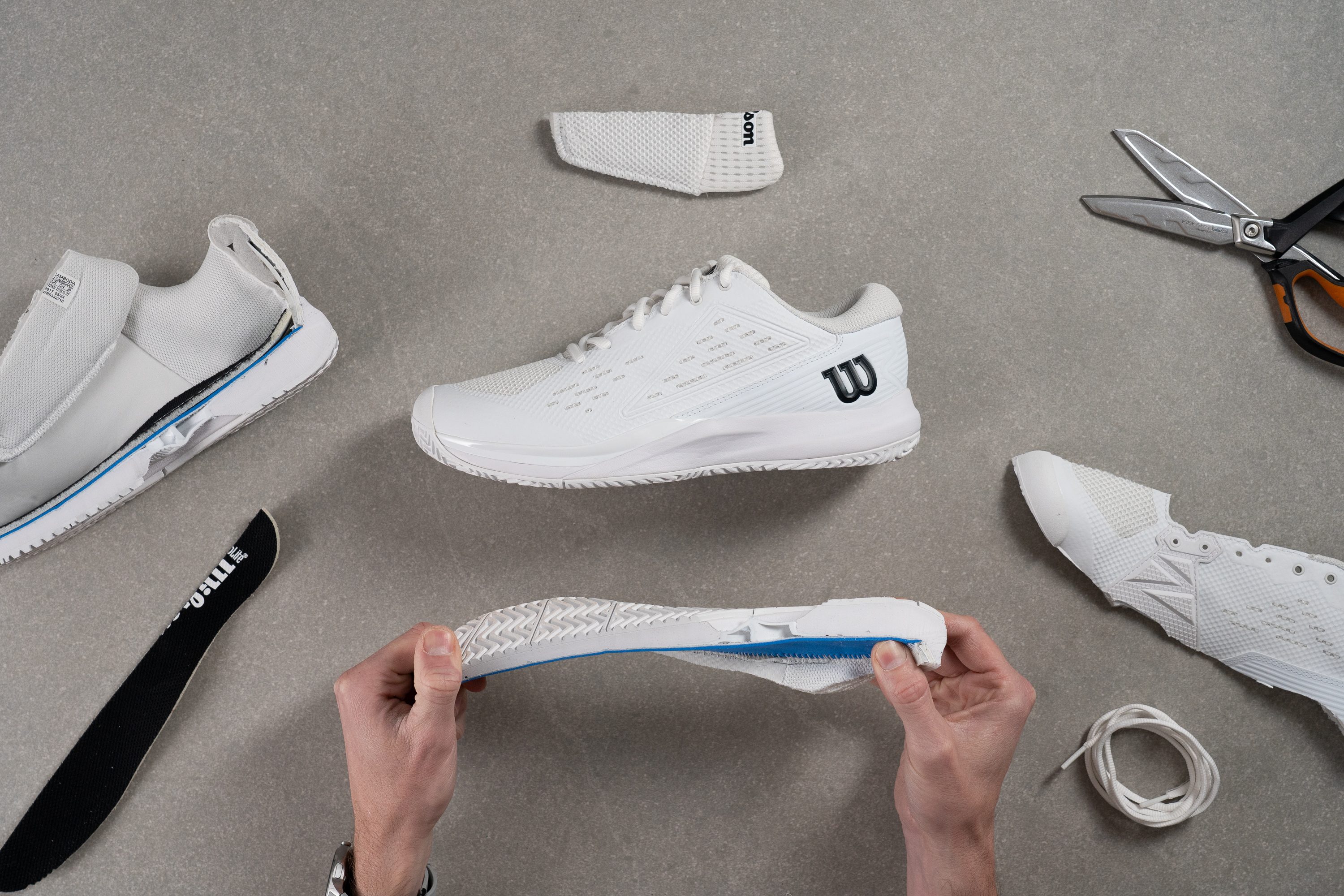
Cushioning
Shock absorption
The Wilson Rush Pro Ace provides enough impact protection without being too high off the court to cause instability. Its well-balanced cushioning showed standard shock absorption scores of 95 SA in the heel and 58 SA in the forefoot.
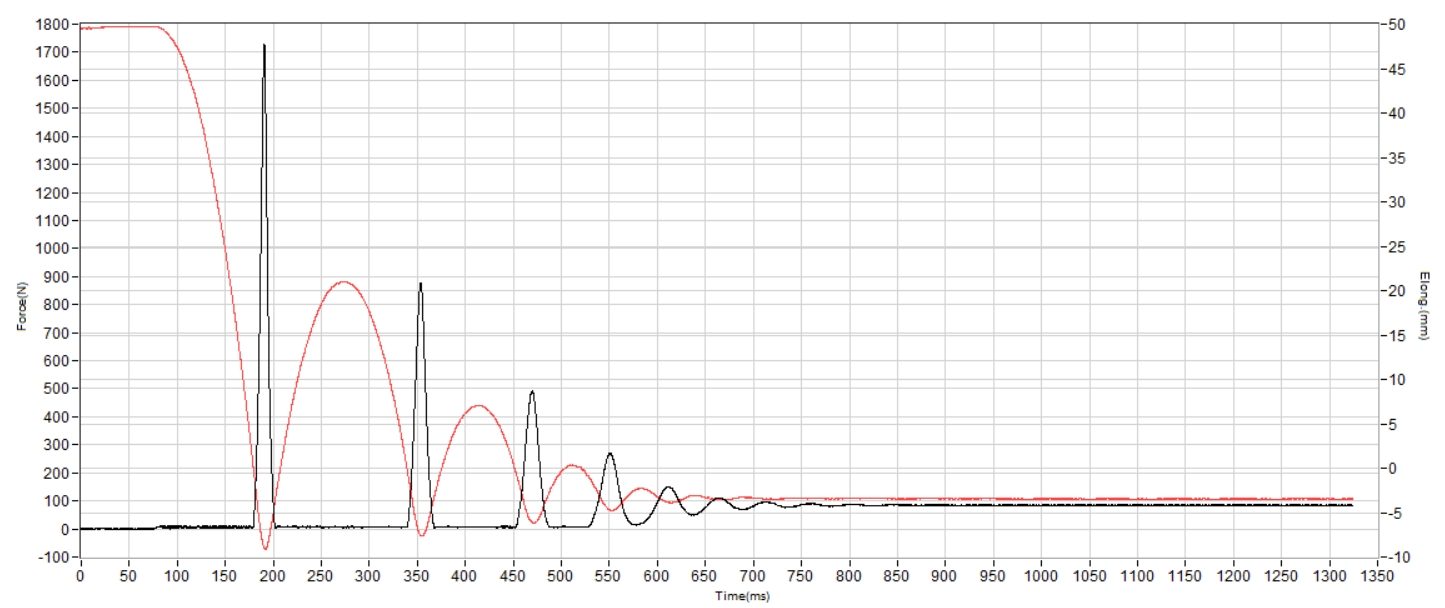
| Rush Pro Ace | 95 SA |
| Average | 99 SA |
Energy return
There is a very moderate rebound to the Rush Pro Ace which is reflected in its average energy return measurements of 46.1% in the heel and 48.5% in the forefoot.
It's not a dead-feeling ride but not a propulsive one either.
| Rush Pro Ace | 46.1% |
| Average | 48.8% |
Heel stack
The Rush Pro Ace's heel stack height proved to be on par with the average at 28.9 mm. It's neither too high off the ground nor too low to the court.
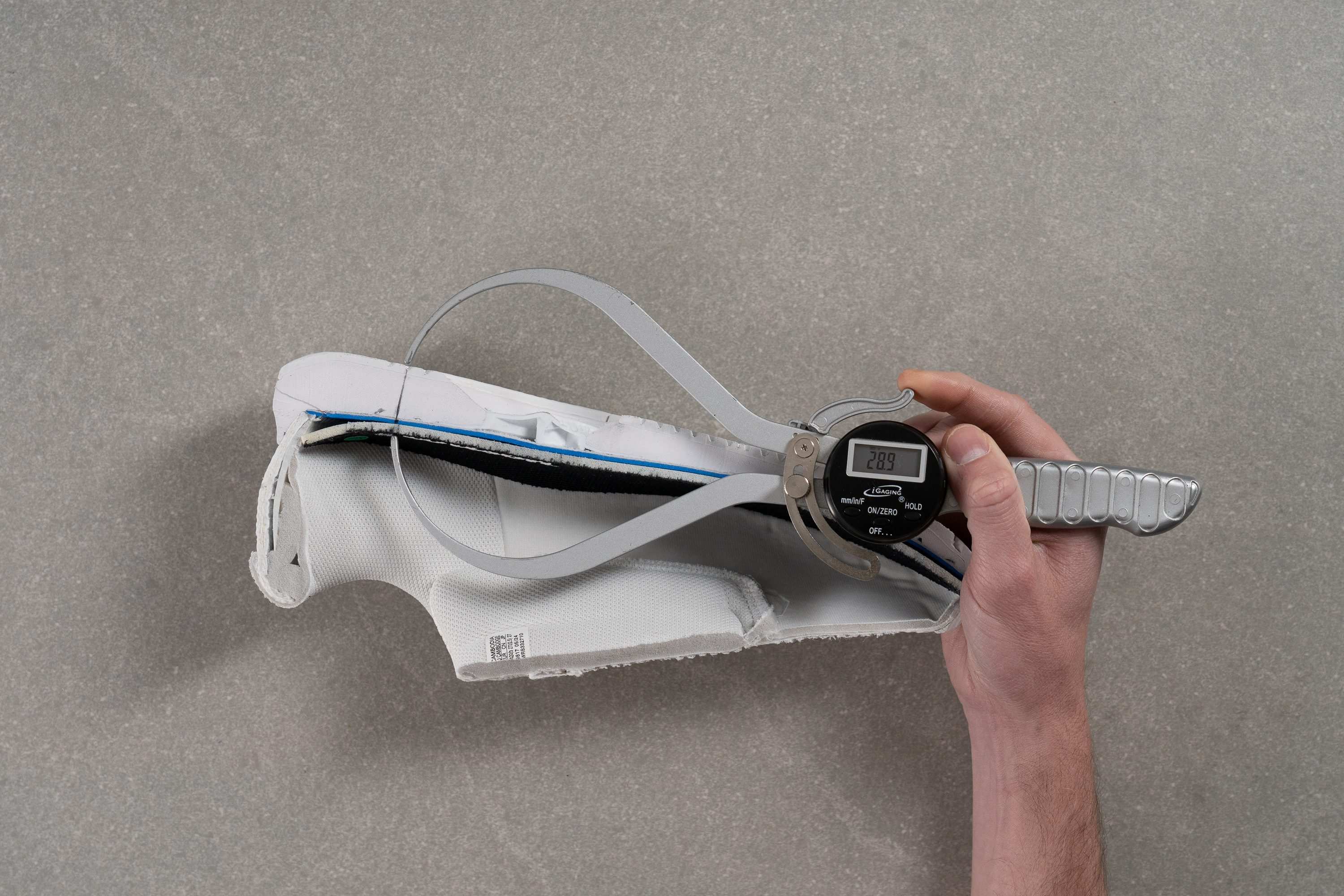
| Rush Pro Ace | 28.9 mm |
| Average | 29.2 mm |
Forefoot stack
We also measured the shoe's forefoot stack at a standard 19.5 mm. It offers good connection to the court while keeping the toe joints and the ball of foot adequately protected from impact.
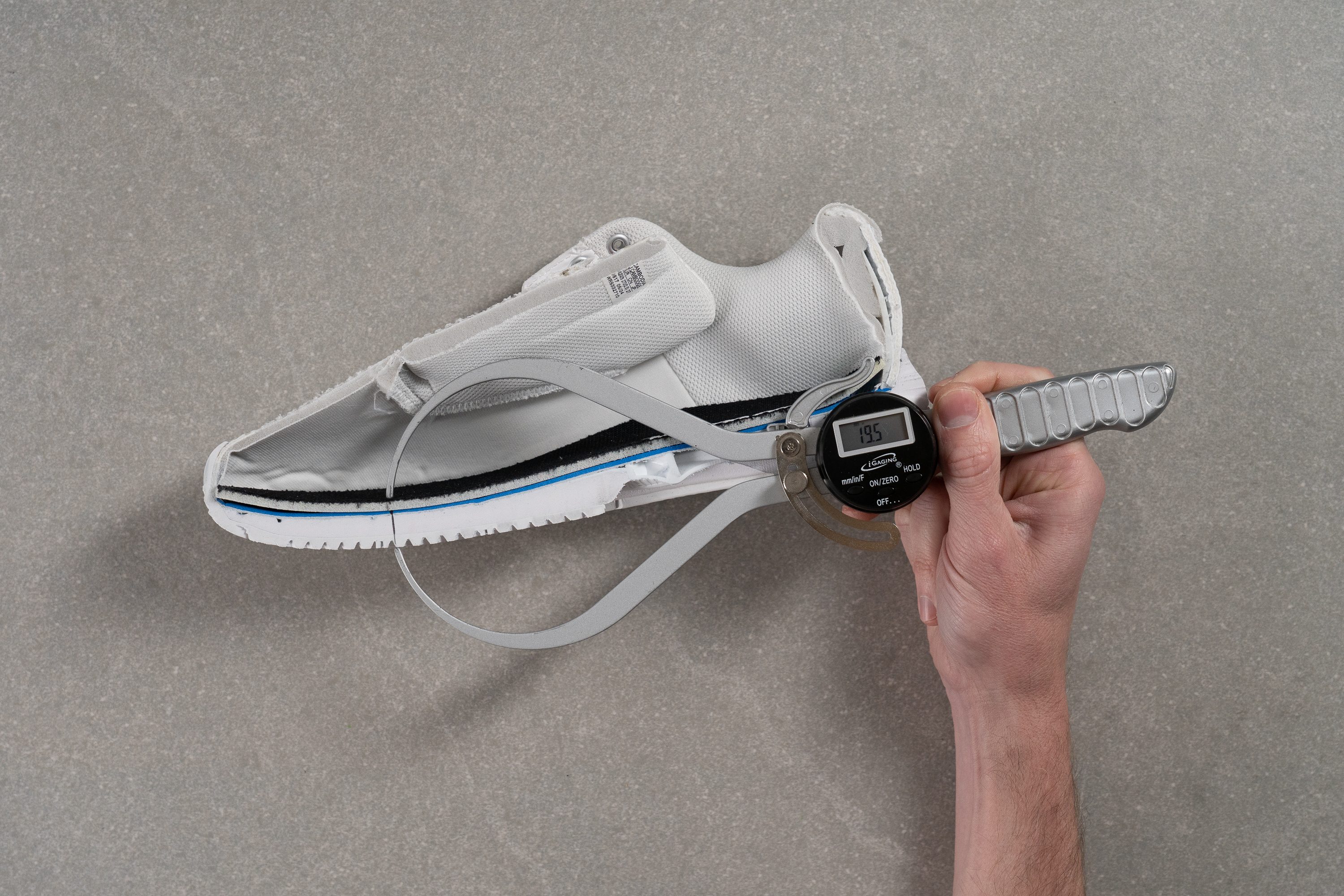
| Rush Pro Ace | 19.5 mm |
| Average | 19.5 mm |
Drop
The 9.4 mm drop of this Wilson tennis shoe didn't bring any surprises either.
It ensures a balanced foot placement where the heel is slightly elevated above the toes. That way, your foot receives the necessary cushioning in the heel while still feeling grounded in the forefoot.

| Rush Pro Ace | 9.4 mm |
| Average | 9.7 mm |
Midsole softness
According to the brand's product description, the Rush Pro Ace features the same R-DST+ cushioning foam as in the Rush Pro 4.0.
However, our durometer showed that the compound is firmer in the Ace shoe. With a higher reading of 27.1 HA, it turned out to be 23% firmer.
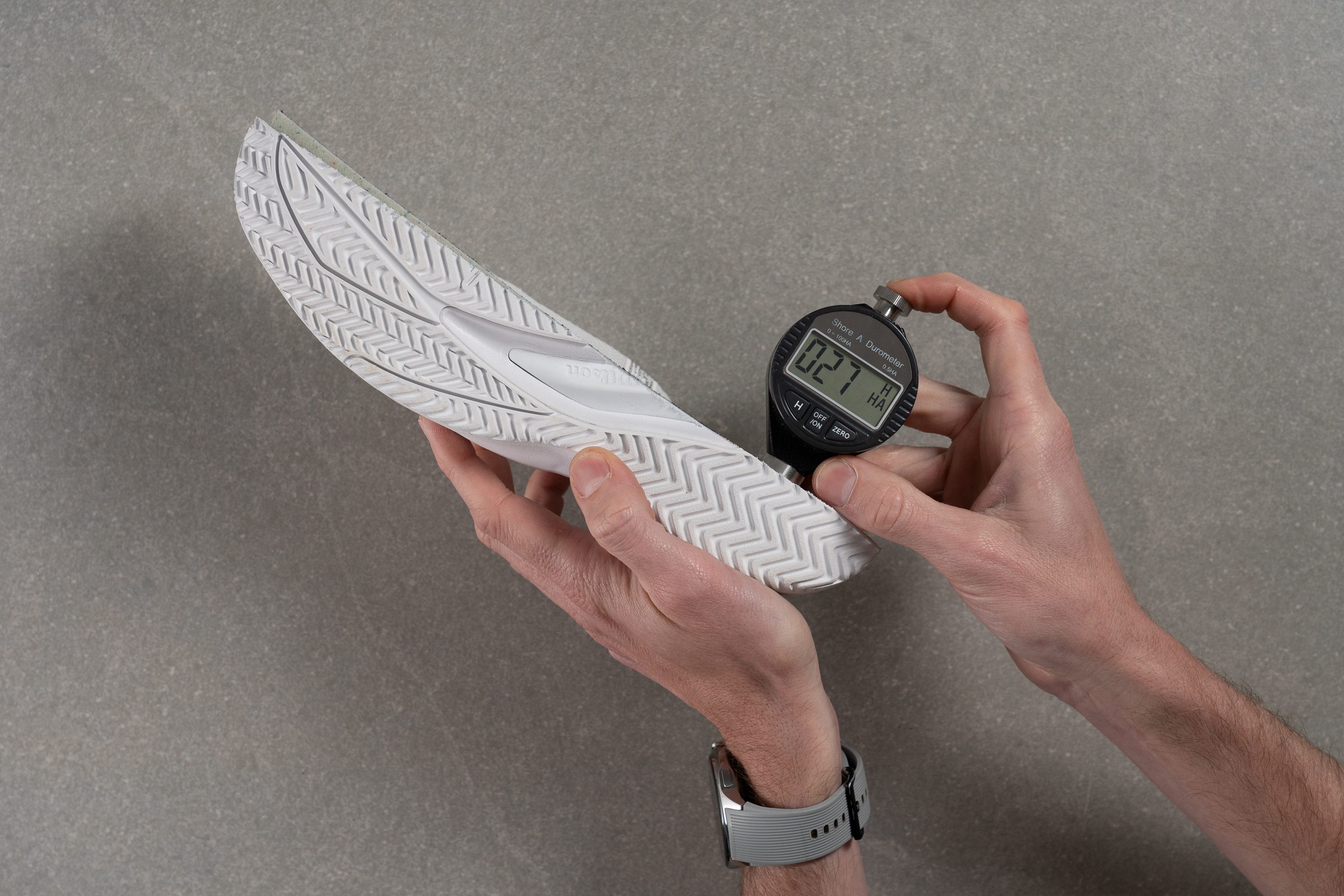
| Rush Pro Ace | 27.1 HA |
| Average | 28.1 HA |
Size and fit
Size
Wilson Rush Pro Ace fits true to size (25 votes).
Width / Fit
Wilson positions the Rush Pro Ace as a wide-foot-friendly tennis shoe with a more spacious toebox. Of course, we had to create a mould of its interiors to check if that's true!
Once the mould was ready, we grabbed a digital calliper to measure its width in the widest area (between the big toe and the pinkie). To our surprise, the tool showed just an average reading of 92.7 mm, which is common for the medium-width tennis shoes we've tested. But what makes it wide then?
The room it offers around the toes.

| Rush Pro Ace | 92.7 mm |
| Average | 92.9 mm |
Toebox width
Just by looking at the mould, you can tell that the Rush Pro Ace has an accommodating toebox that fits all five toes comfortably. And that is what our calliper measurement confirmed as well.
With an above-average width of 72.7 mm near the big toe, it is one of the widest tennis shoe toeboxes we tested.
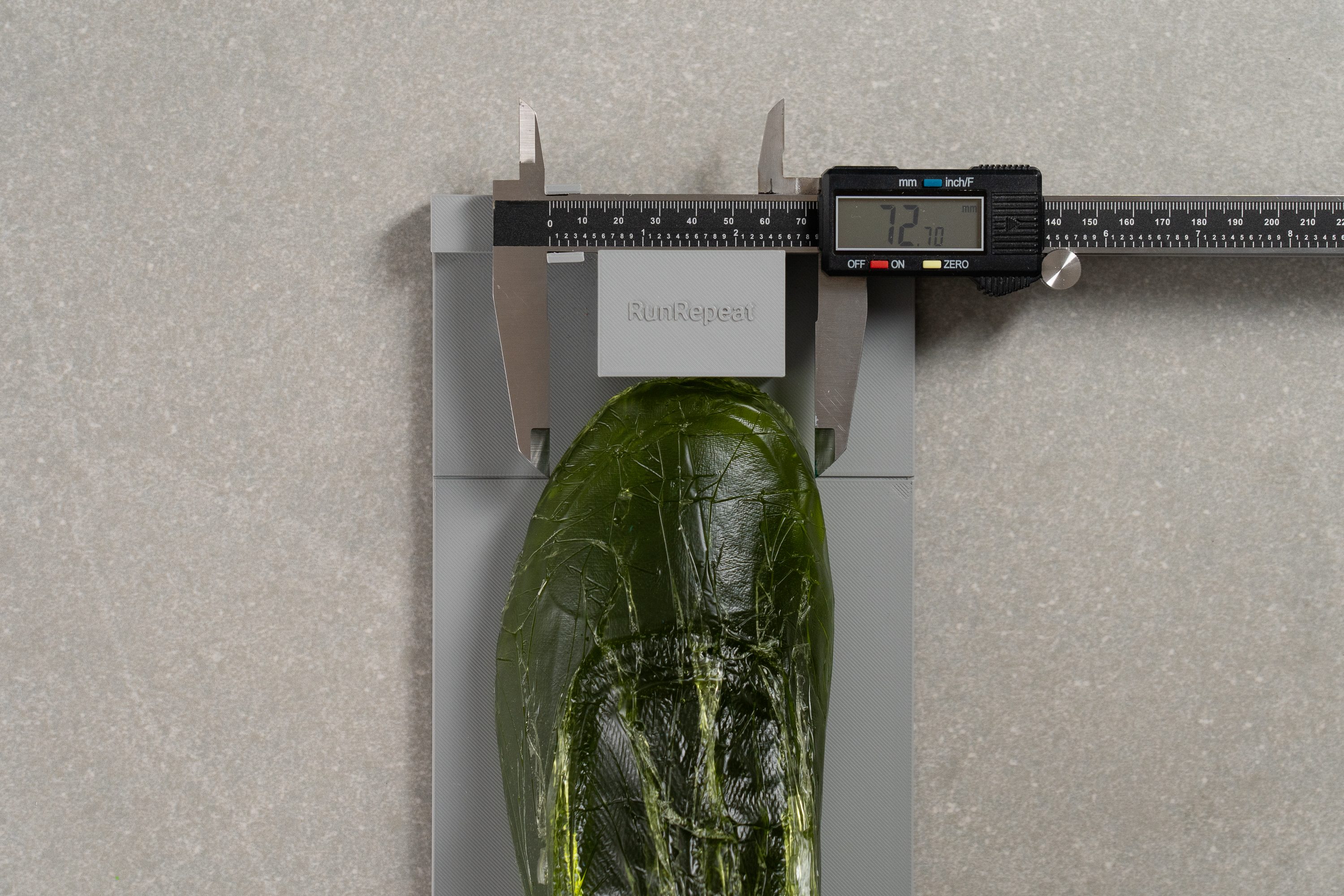
| Rush Pro Ace | 72.7 mm |
| Average | 69.2 mm |
Toebox height
On top of that, we measured its toebox height at 27.6 mm which is a few milimeters taller than average. This further increases the shoe's toebox volume.
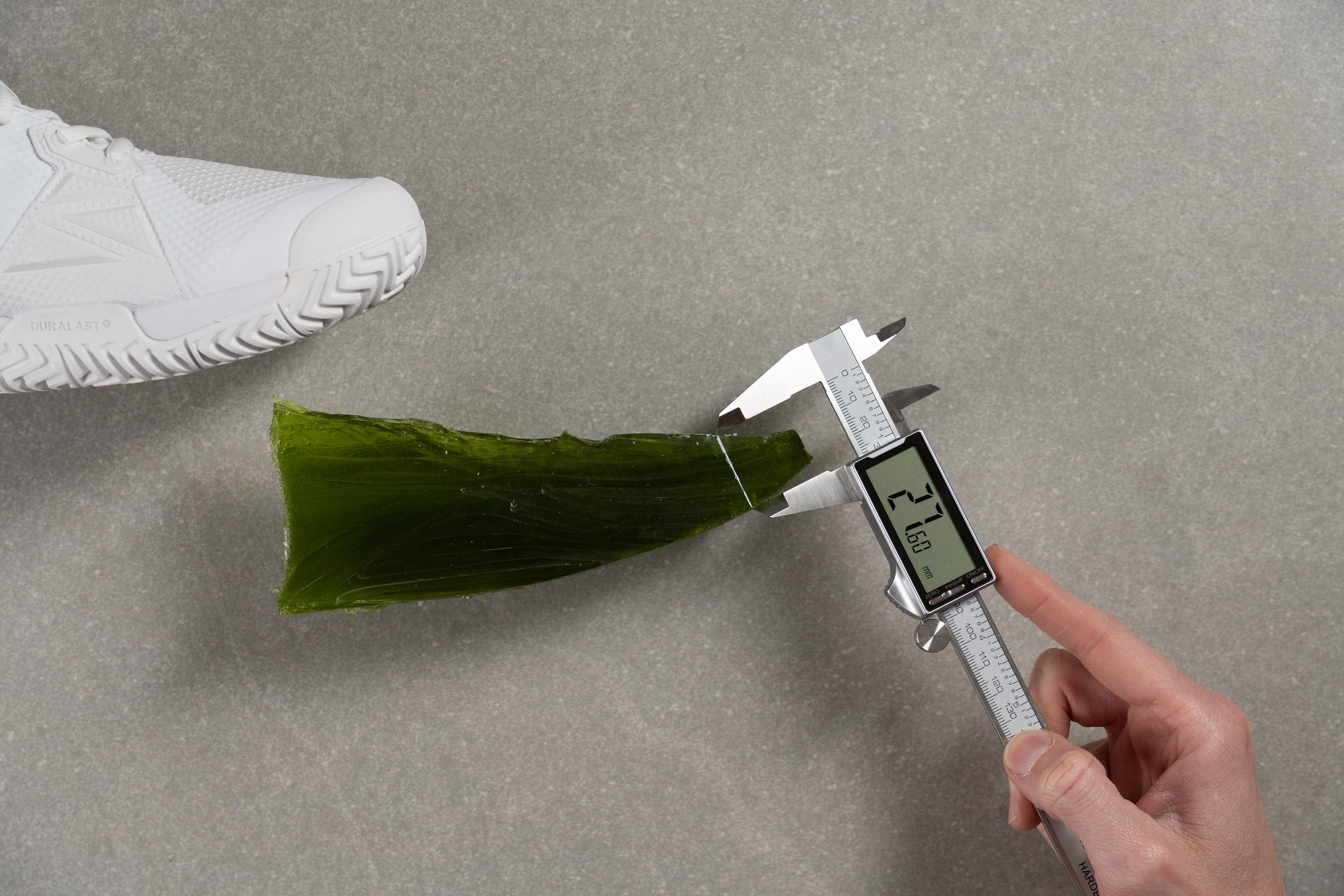
| Rush Pro Ace | 27.6 mm |
| Average | 25.1 mm |
Traction / Grip
The Rush Pro Ace features an undulating outsole pattern with a mix of thicker and sharper tread lines.
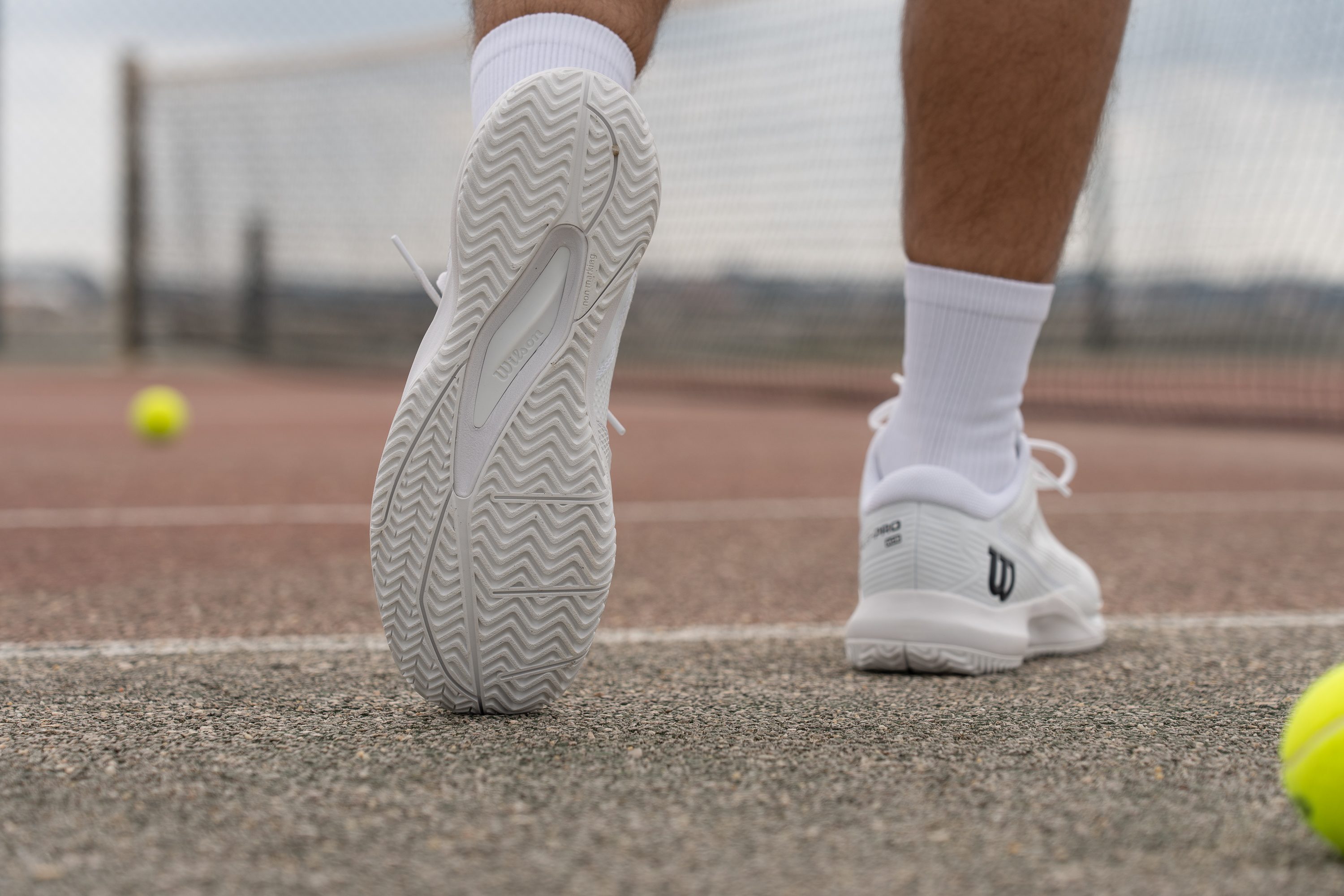
This setup allowed us to stay surefooted during rapid cuts but didn't hinder sliding and pivoting either.
Forefoot traction
Testing the shoe's forefoot grip on dry concrete, we found that it generates a good friction coefficient of 0.77. This setup allowed us to stay surefooted during rapid cuts but didn't hinder sliding and pivoting either.
| Rush Pro Ace | 0.77 |
| Average | 0.76 |
Outsole design
The Rush Pro Ace features an undulating herringbone tread pattern with a mix of thicker and sharper tread lines for versatile all-court performance.

Flexibility / Stiffness
A stiff chassis around the midsole and a plastic shank in the midfoot definitely limit the Rush Pro Ace's flexibility. But as our flex test showed, it's not the stiffest either.
It took 16.4N to bend the shoe a 30-degree angle which is just as much as the category average. That means a balance of pliability for comfort and stiffness for propulsion. Because a very flexible shoe won't give you snappy sprints and scrambles.
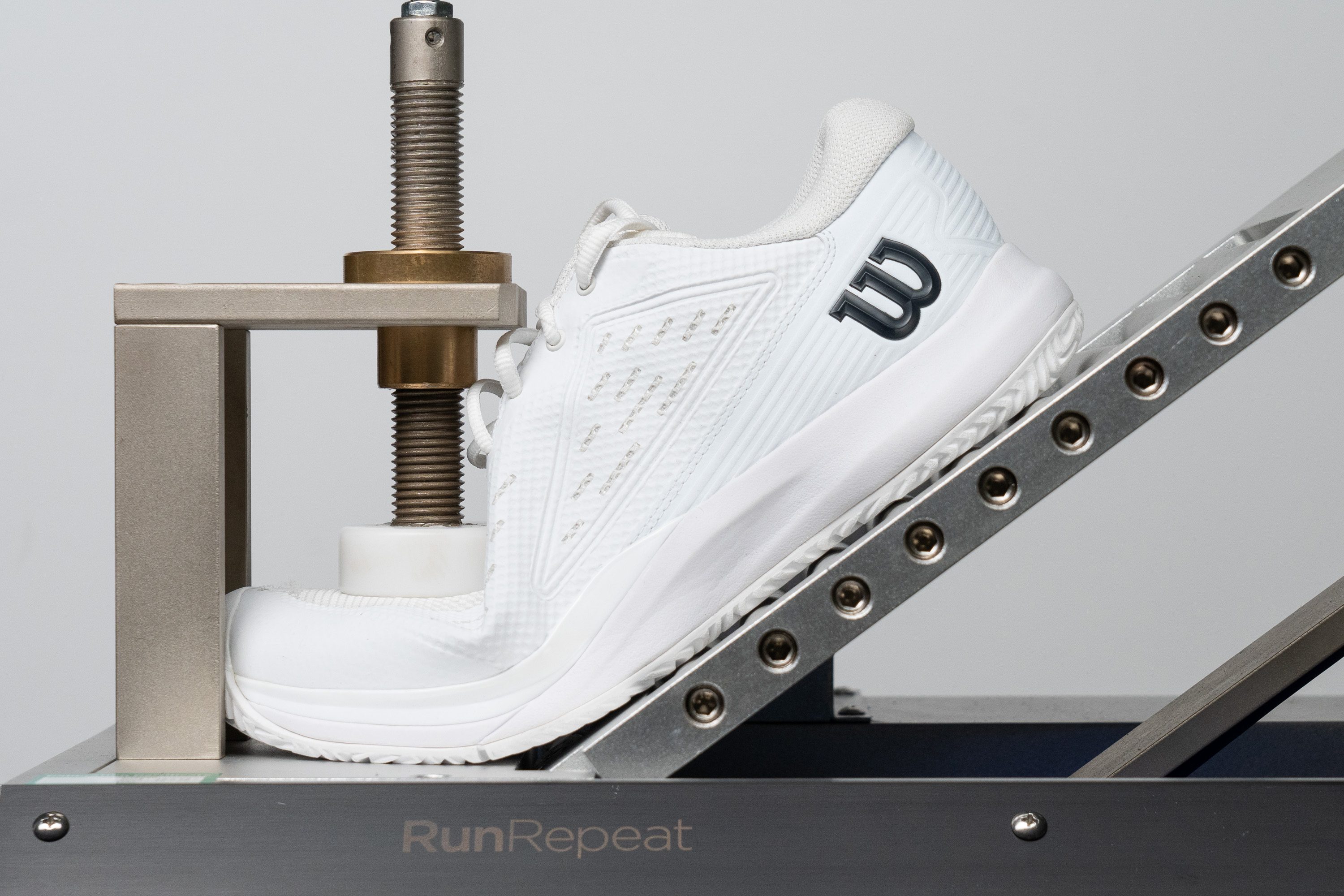
| Rush Pro Ace | 16.4N |
| Average | 16.6N |
Weight
Putting the Wilson Rush Pro Ace on a scale returned a standard weight of 12.59 oz (357g).
Considering its moderate price point, we are happy with the amount of cushioning, stability, and durability packed into this average-weight tennis shoe.

| Rush Pro Ace | 12.6 oz (357g) |
| Average | 12.8 oz (362g) |
Breathability
Initially, the shoe's minimally-layered and rather transparent upper gave us high pretty hopes for breathability.
But once we put the Rush Pro Ace through our smoke-pumping test, we saw how limited its ventilation capacity actually was.
The shoe's toebox mesh was pretty reluctant to release the smoke which lowered its breathability score to 3/5.
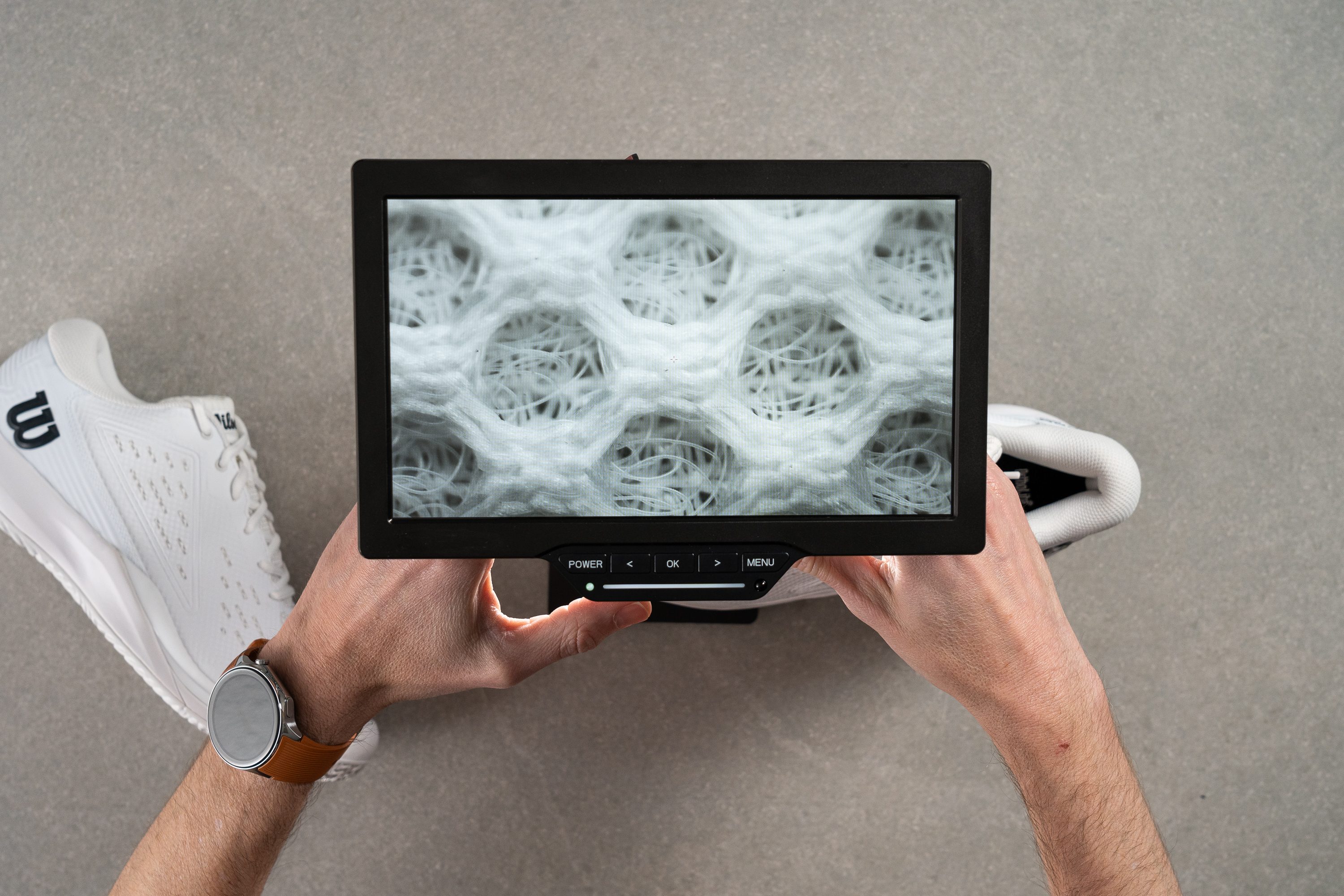
Not the best result but the good news is that the shoe's porous mesh prevented it from feeling too toasty. Numerous tiny air channels throughout the upper add up and keep this Wilson shoe's airflow sufficient.

| Rush Pro Ace | 3 |
| Average | 3.2 |
Stability
Lateral stability test
The Rush Pro Ace features a variation of the brand's 4D Support Chassis to ensure stable footing on the court. It looks very similar to the more advanced 2.0 chassis on the Rush Pro 4.0 but there is a notable difference in the shape and placement of supportive components.

But having tested both shoes in the same conditions, we are happy to report that the difference in performance is barely noticeable! We did find the Rush Pro's heel counter to be a bit stiffer but it didn't make such a tangible difference.
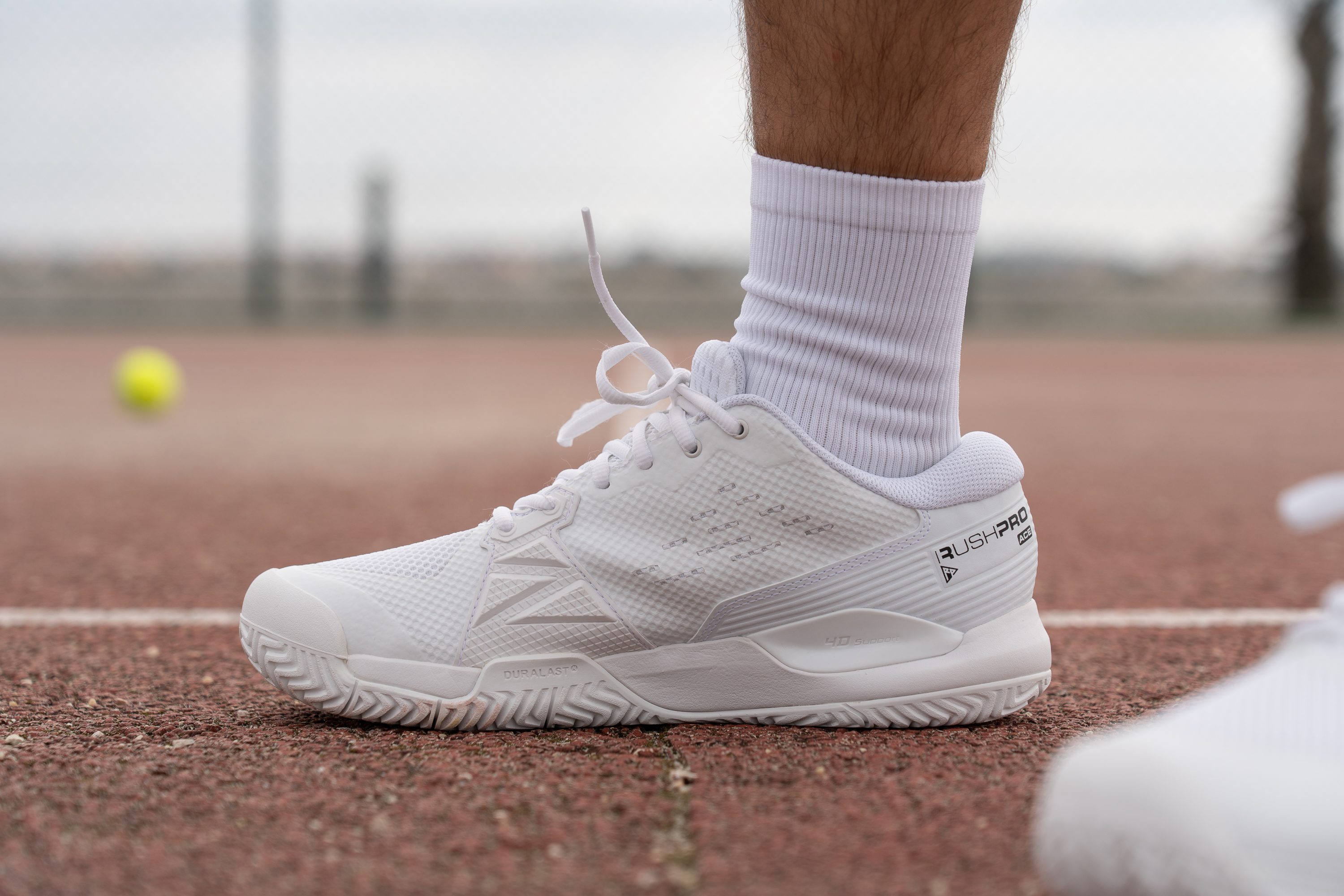
As you can see from the photo above, the shoe's chassis looks different on the medial side and on the outside. This asymmetrical design helps to prevent the foot from spilling both inwards (overpronation) and outwards (underpronation/supination).
That way, we felt like we could rely on the Ace's support during the most forceful side-to-side movements in our playtests.
Torsional rigidity
The 4D Chassis obvioiusly added a lot of rigidity to the shoe as it showed little-to-no give in our manual twist test.
On a 1-5 stiffnesst scale, where 5 implies no give at all, the Wilson Rush Pro Ace got a high score of 4. It's a little behind the stability monsters like the ASICS Gel Resolution or the Adidas Barricade but you get the benefit of added comfort thanks to the shoe's moderate flexibility and lighter build.
And let's not forget that the Rush Pro Ace is not in the same price range either.
| Rush Pro Ace | 4 |
| Average | 4.4 |
Heel counter stiffness
Another high stiffness score of 4/5 goes to the shoe's heel counter. Even though it didn't get the maximum possible score, we still found it heel and ankle lockdown very secure.
That generous padding around the collar plays its part in helping our heels sink deeper into the shoe.
| Rush Pro Ace | 4 |
| Average | 4.1 |
Midsole width - forefoot
Much like the Rush Pro 4.0, the Rush Pro Ace has a pretty moderate platform width which is best described as "just enough."
The shoe's forefoot flange is not the most prominent one but it is on par with the average at 110.5 mm. This is enough of a landing area to hels the foot stop and push off during an abrupt side step or a dynamic zig zag.
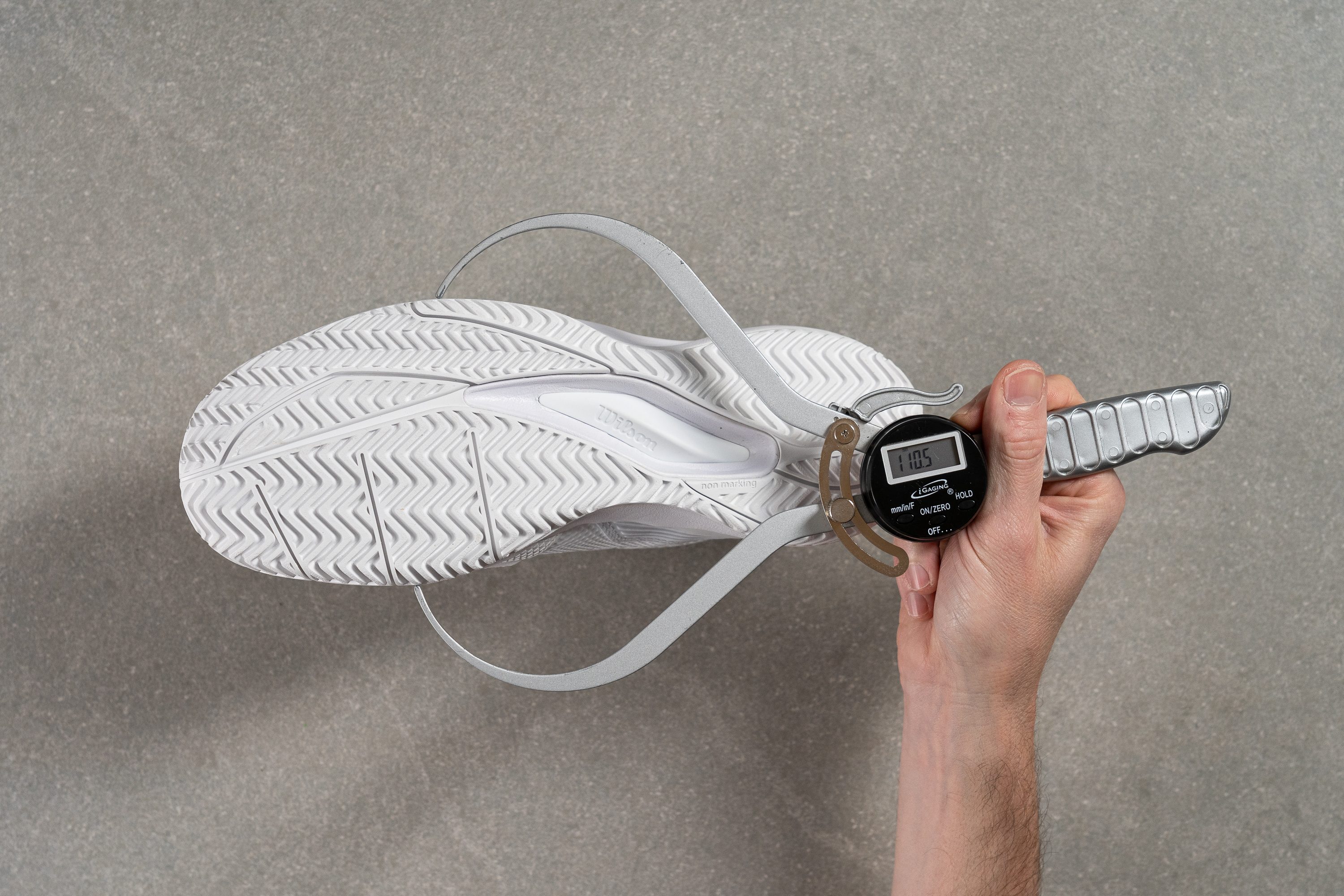
| Rush Pro Ace | 110.5 mm |
| Average | 111.9 mm |
Midsole width - heel
We found the same to be true for the shoe's heel width.
Measuring 87.2 mm in its widest part, the sole is even a little narrower than average here. So if you are a baseline grinder, you may prefer a tennis shoe with bit more sole to lean on.
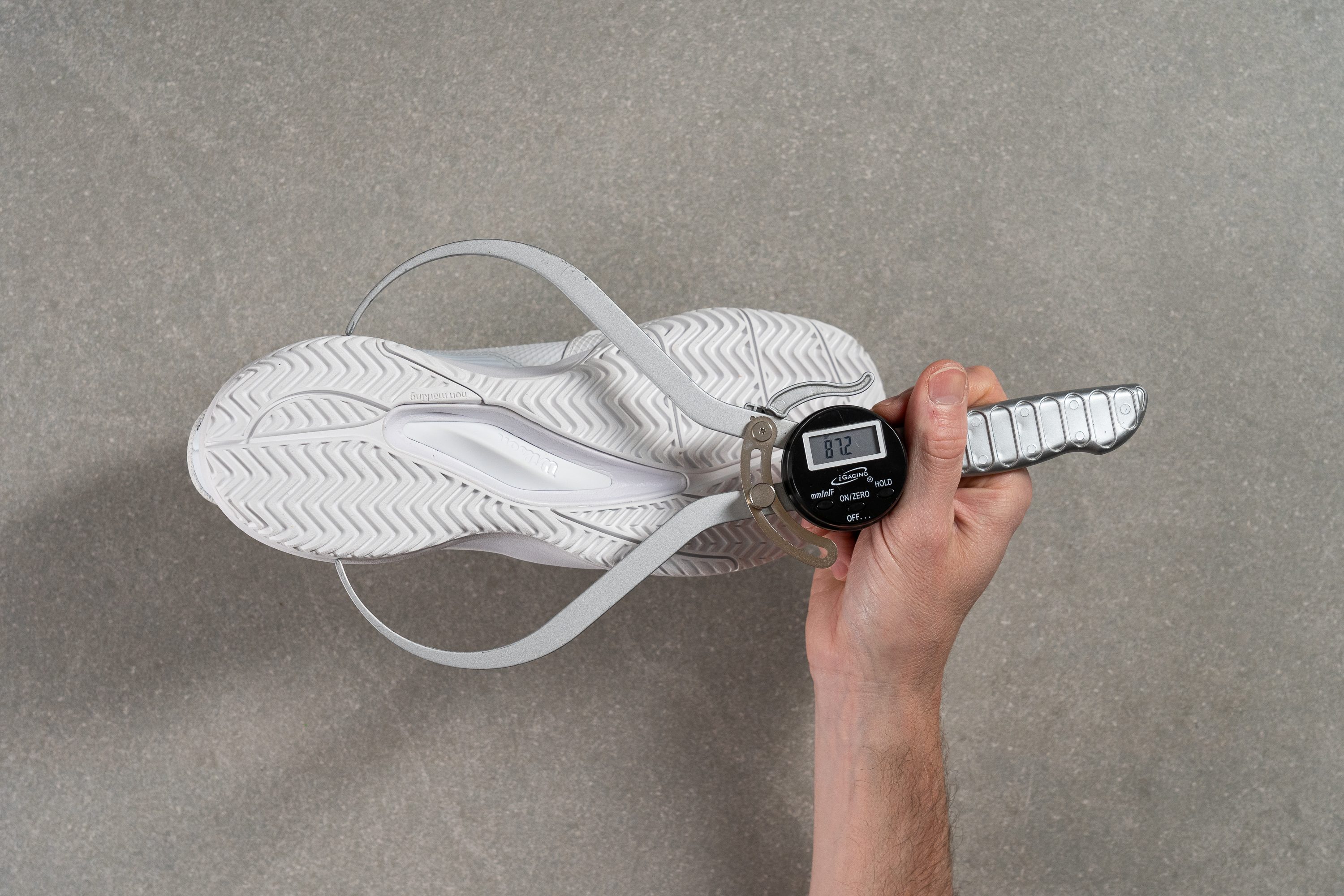
| Rush Pro Ace | 87.2 mm |
| Average | 89.6 mm |
Durability
Toe guard durability
We were pleased to see that the Rush Pro Ace didn't cut corners on its toe drag guard durability. The shoe features a Medial Rubber Drag Pad which is similar to that on the more expensive Rush Pro 4.0.
This piece of rubber has convex triangles for added wear resistance and protects the upper part of the shoe from abrasive sliding and toe dragging on the court.
To mimic the latter, we drilled the element with sandpaper at a high Dremel speed of 10K RPM. And as you can see, we hardly even got halfway through the rubber! That earned the shoe's toe guard durability a high score of 4/5.
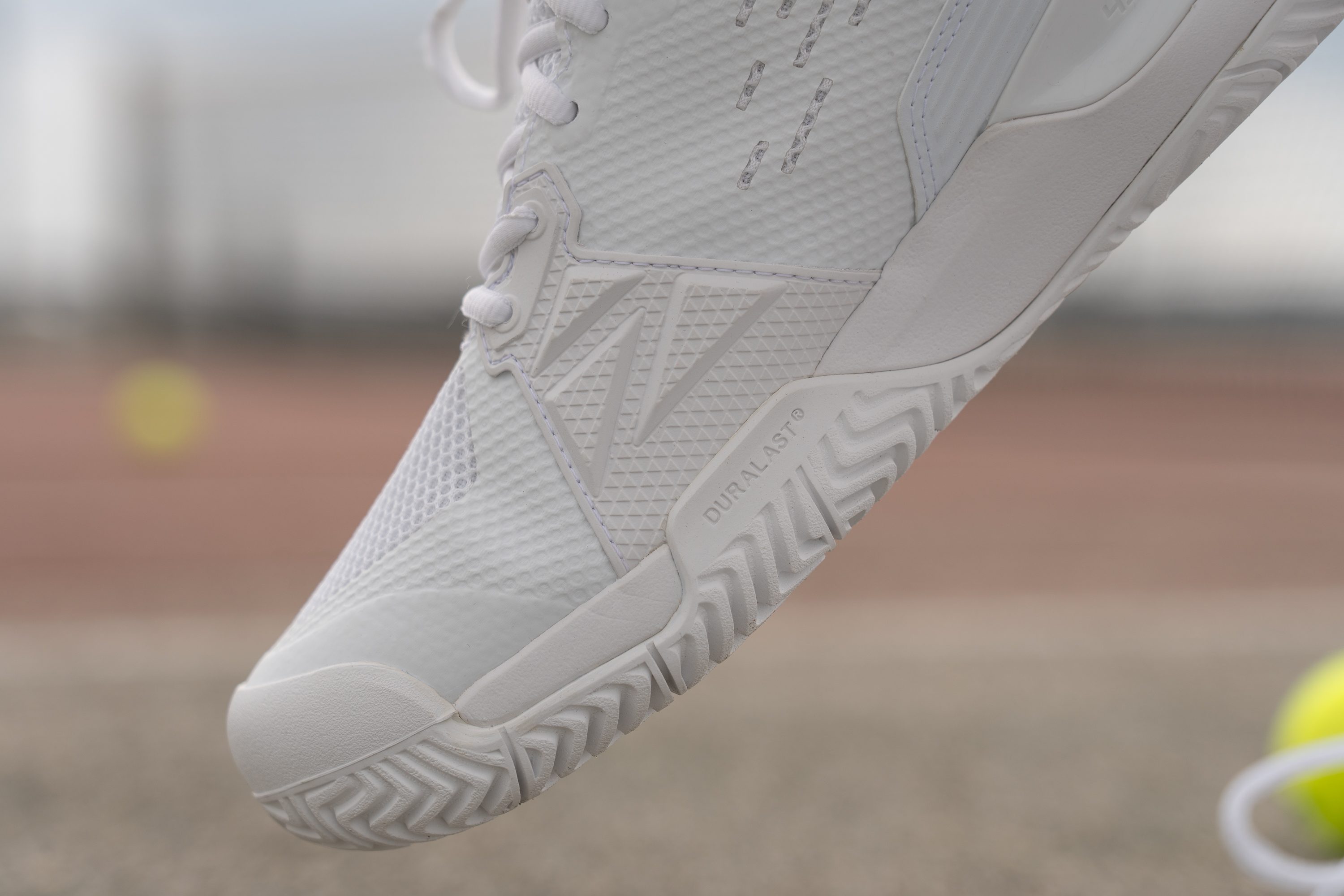
Meanwhile, the Duralast rubber outsole extends up to protect the bottom part of this abrasion-prone shoe area. It also showed stellar results in our outsole durability test below.
| Rush Pro Ace | 4 |
| Average | 3.3 |
Toebox durability
That mesh fabric looks and feels frail, so we are glad to see some synthetic reinforcement around the Rush Pro Ace's toebox.
As our Dremel test showed, it actually helped to improve the shoe's toebox longevity by not letting the sandpaper go all the way through. That bumps our toebox durability score to 3/5.
| Rush Pro Ace | 3 |
| Average | 3.7 |
Heel padding durability
On the downside, the mesh lining inside the shoe's collar was not as resistant to wear-and-tear as the outer mesh. It took less than 4 seconds to drill a hole in this area and thus, we couldn't rate its heel padding durability any higher than 2/5.
If you have concerns about developing holes inside your tennis shoes too quickly, you may want to consider the Adidas Gamecourt 2.0 or the K-Swiss Hypercourt Express 2 instead.
| Rush Pro Ace | 2 |
| Average | 3.3 |
Outsole hardness
The Rush Pro Ace may be a cheap shoe but its Duralast outsole is certainly not!
Described as high-density rubber, our own density measurement confirmed this with a high durometer reading of 85.5 HC. It is just as hard as the average tennis shoe outsole.
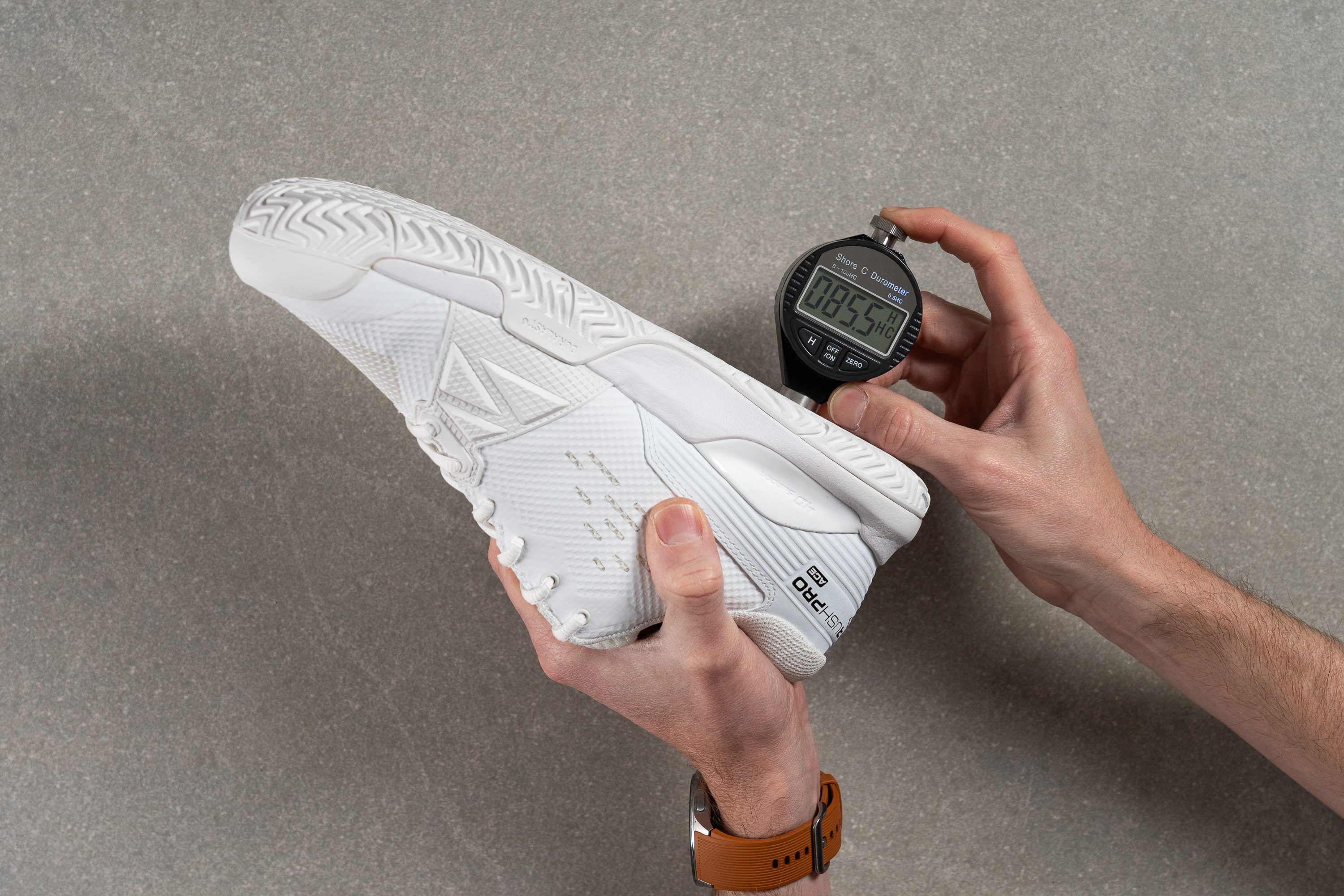
| Rush Pro Ace | 85.5 HC |
| Average | 86.0 HC |
Outsole durability
The rubber compound further proved its worth in our highly abrasive Dremel test.
After being exposed to sandpaper for 18 seconds at high speed of 10K RPM, it showed less than a millimetre of damage (0.8 mm, to be precise). This is similar to what we typically get in more expensive tennis shoes!
| Rush Pro Ace | 0.8 mm |
| Average | 0.8 mm |
Outsole thickness
We also found the shoe's outsole thickness to be sufficient at 3.8 mm. This is a solid amount of rubber for a hard court tennis shoe to last a reasonable amount of time.
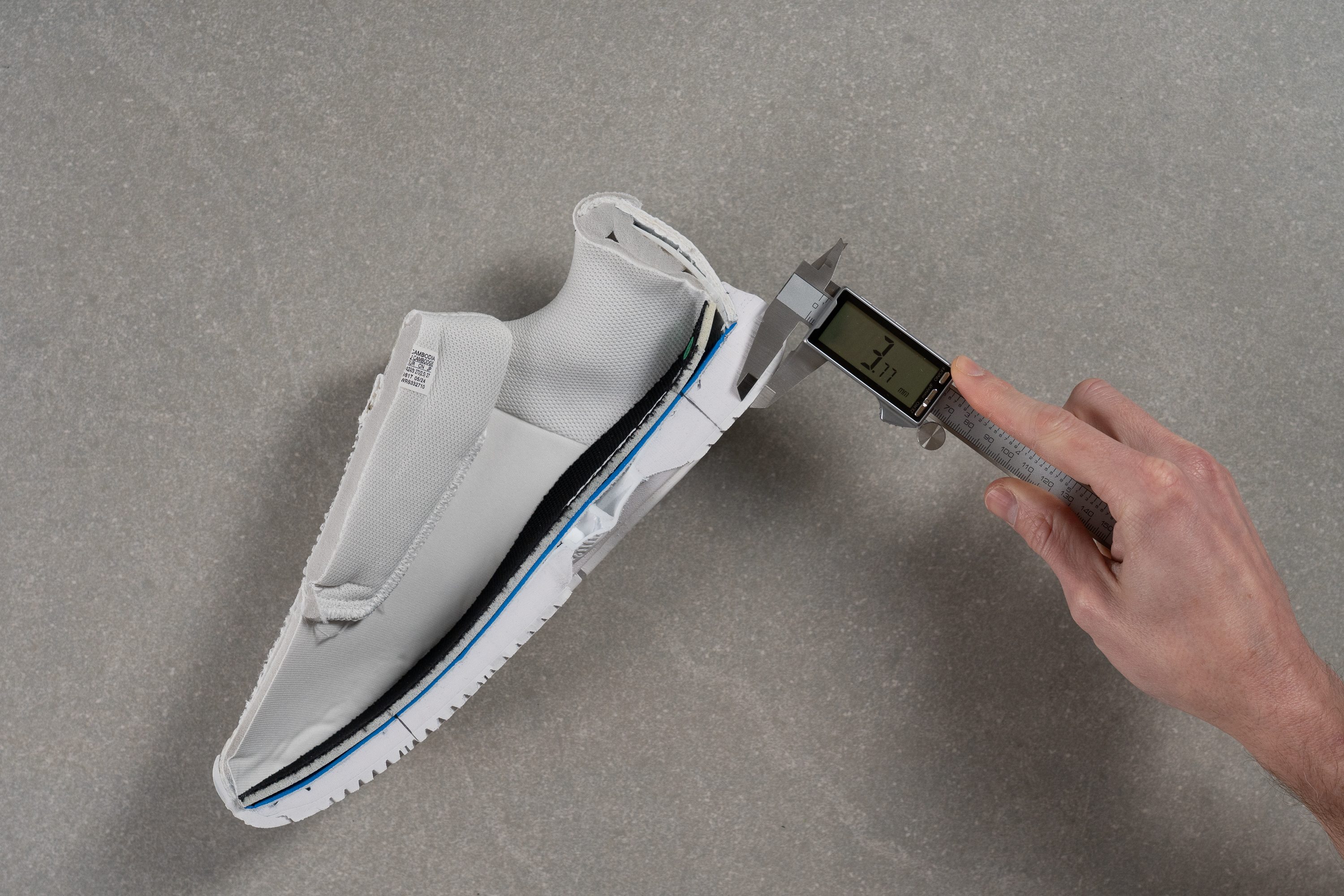
| Rush Pro Ace | 3.8 mm |
| Average | 4.2 mm |
Misc
Insole thickness
The shoe's underfoot cushioning is finished off with a pretty comfortable moulded OrthoLite insole.
The brand describes it as a high-density foam that offers maximum cushioning. While we agree with the former (the insole is thinner than average at 4.0 mm), we are not so sure about the latter (not a tonne of added cushioning).
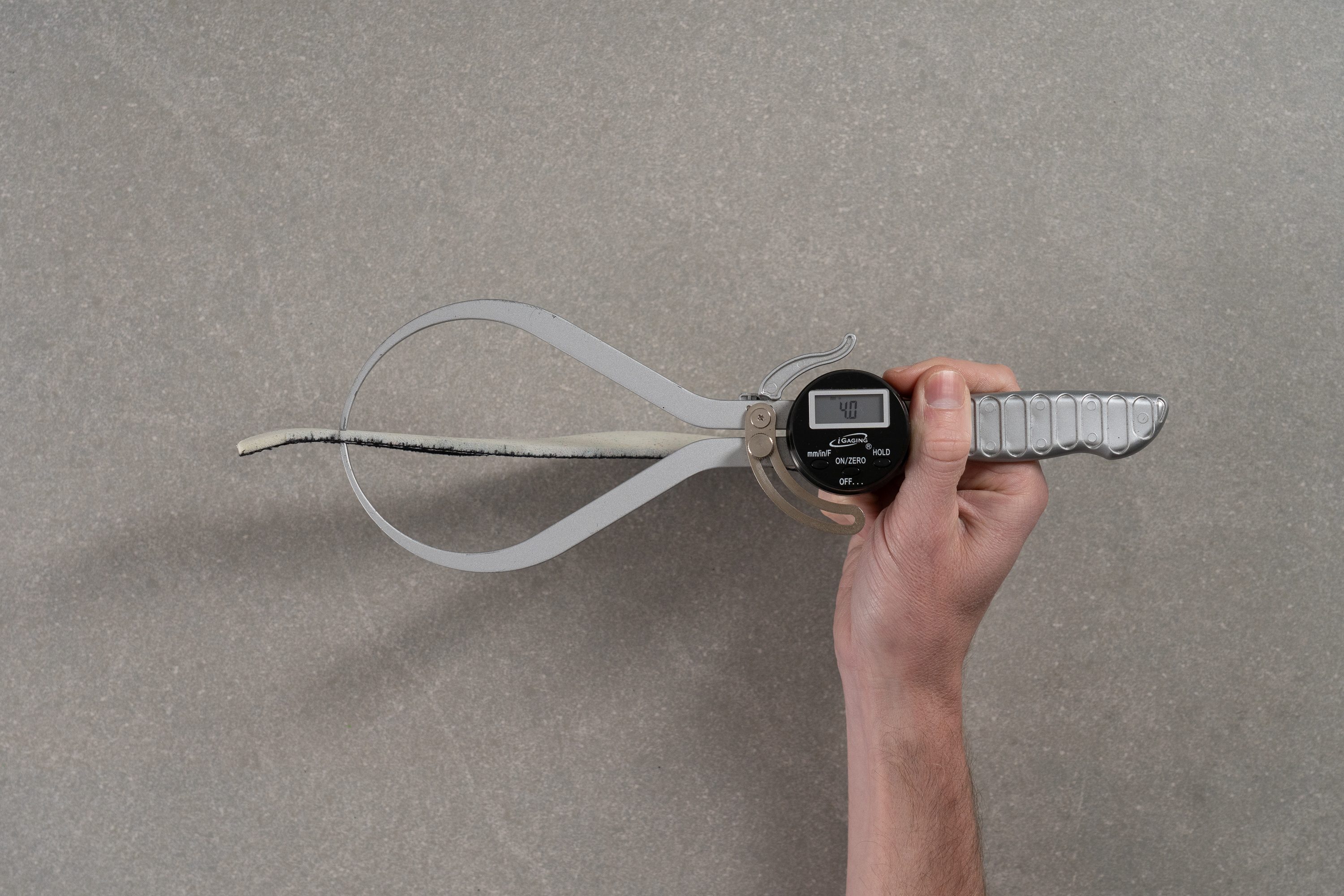
| Rush Pro Ace | 4.0 mm |
| Average | 5.1 mm |
Removable insole
The shoe uses a pretty comfortable OrthoLite insole but it can be replaced with a custom orthotic if needed.
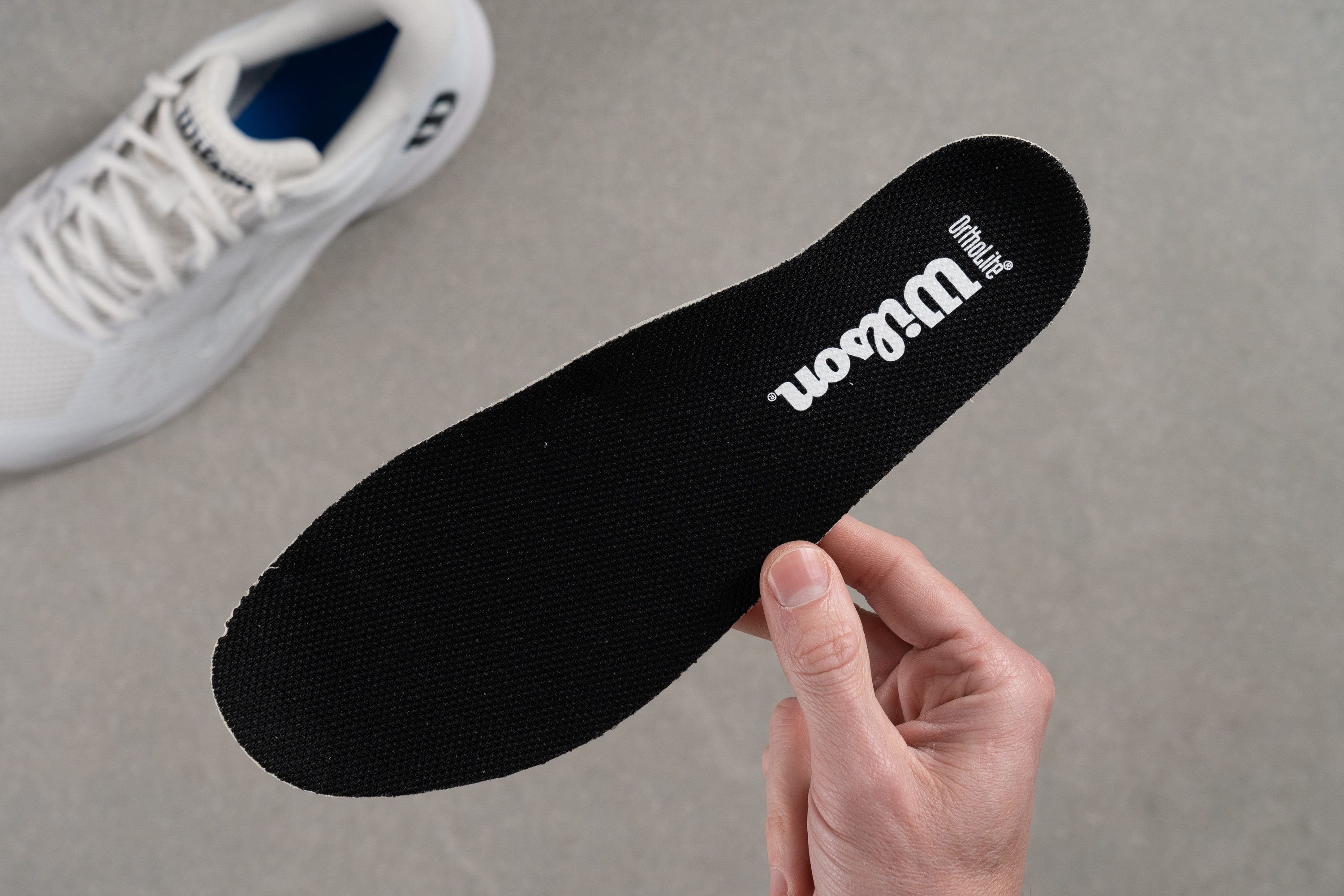
| Rush Pro Ace | Yes |
Tongue padding
One of the things you notice immediately when putting the Rush Pro Ace on is how generously padded its interiors are.
Measuring its tongue thickness in particular returned an above-average reading of 11.9 mm. It is some of the puffiest tongues you can find in tennis shoes.
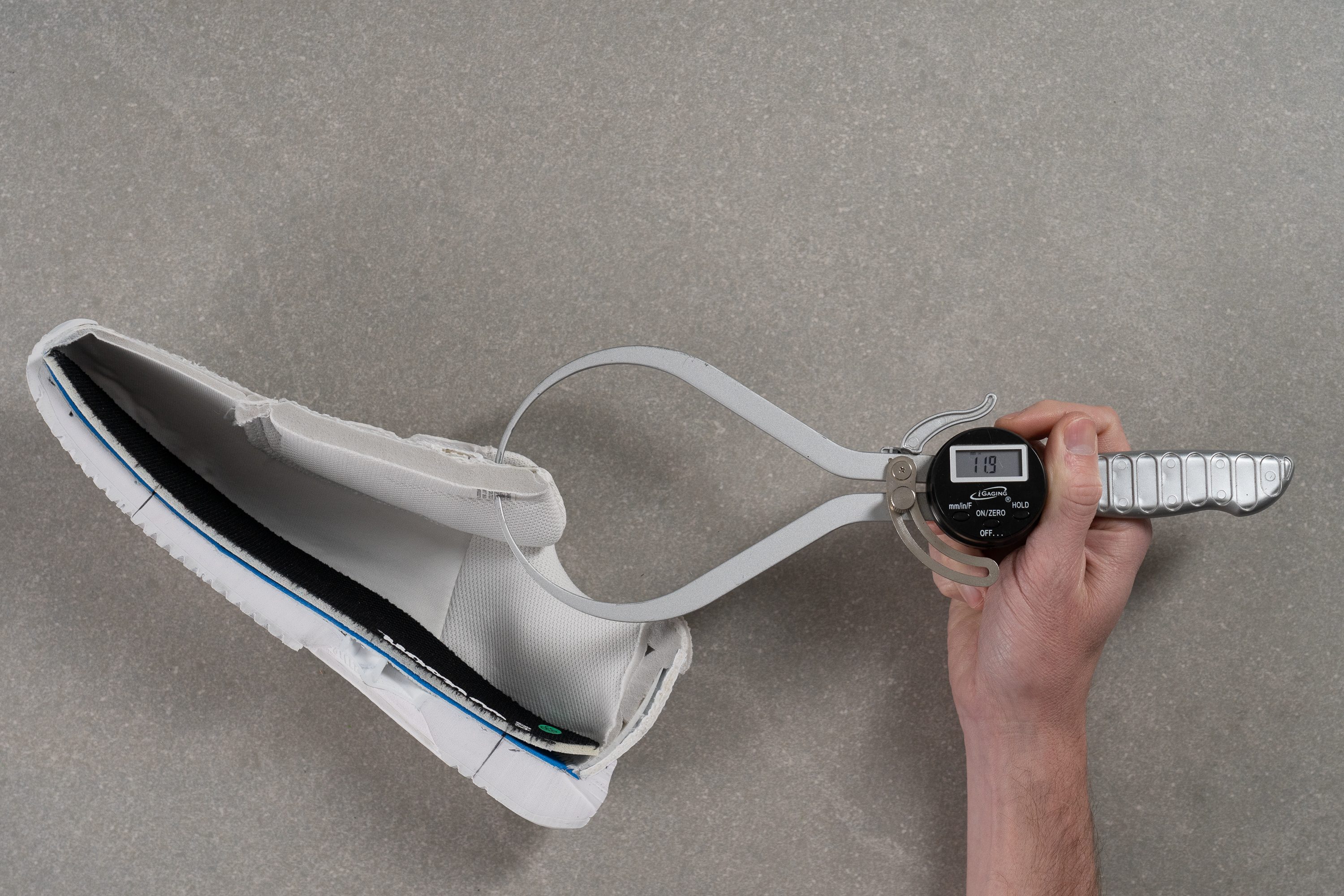
| Rush Pro Ace | 11.9 mm |
| Average | 8.1 mm |
Tongue: gusset type
Tongue gussets are the one feature we always miss in more affordable tennis shoes. Because of that, some tongue shifting is possible.

| Rush Pro Ace | None |
Price
Wilson offers fantastic value for money in many ways. Even though the Rush Pro Ace fits into the cheap category of tennis shoes, there is nothing cheap about it!
Comfortable, supportive, and durable, it beats some of the more expensive options with its quality.
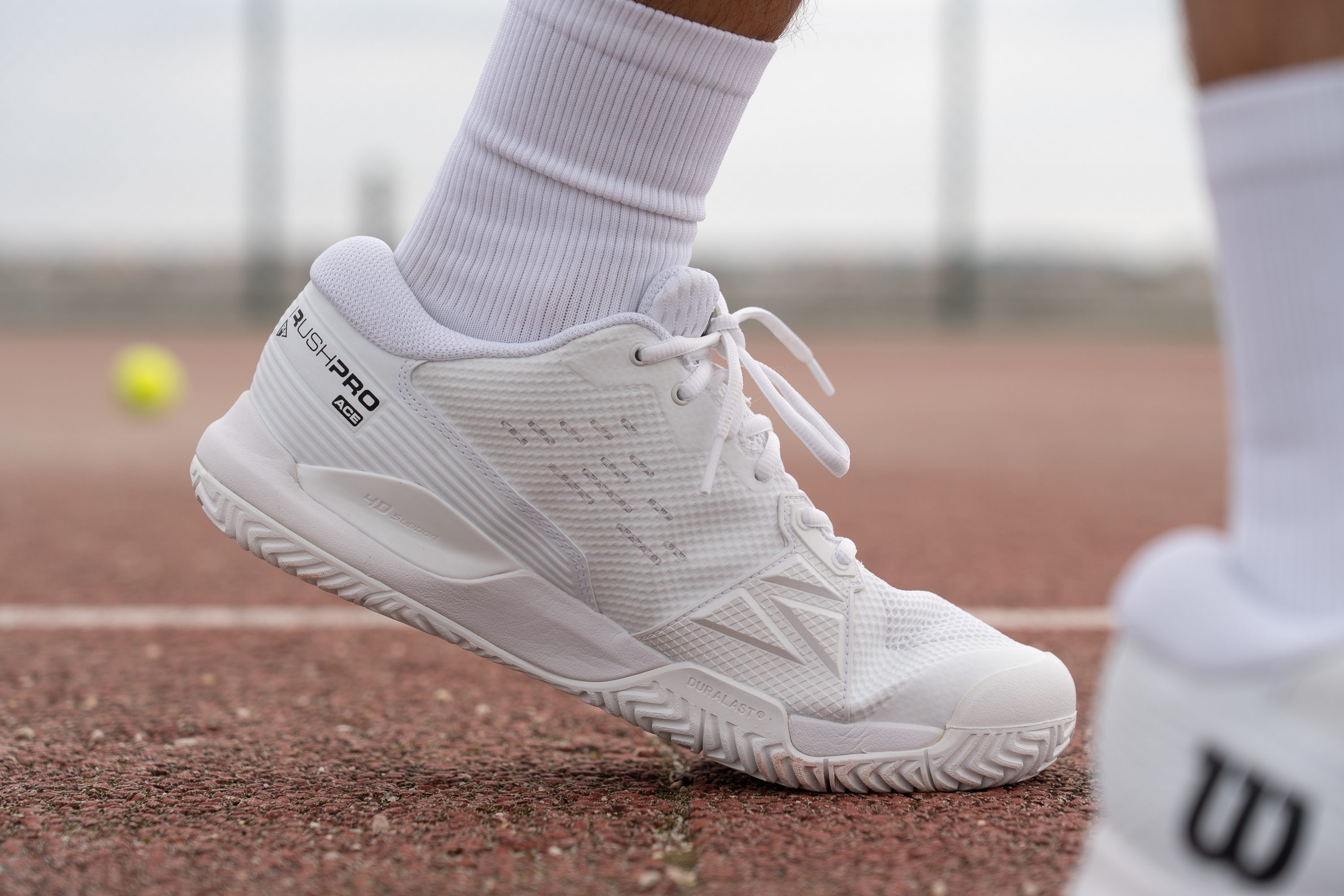
| Rush Pro Ace | $100 |
Heel tab
The shoe's heel counter design allows for an easy entry. That's why no finger loops or pull tabs are necessary.
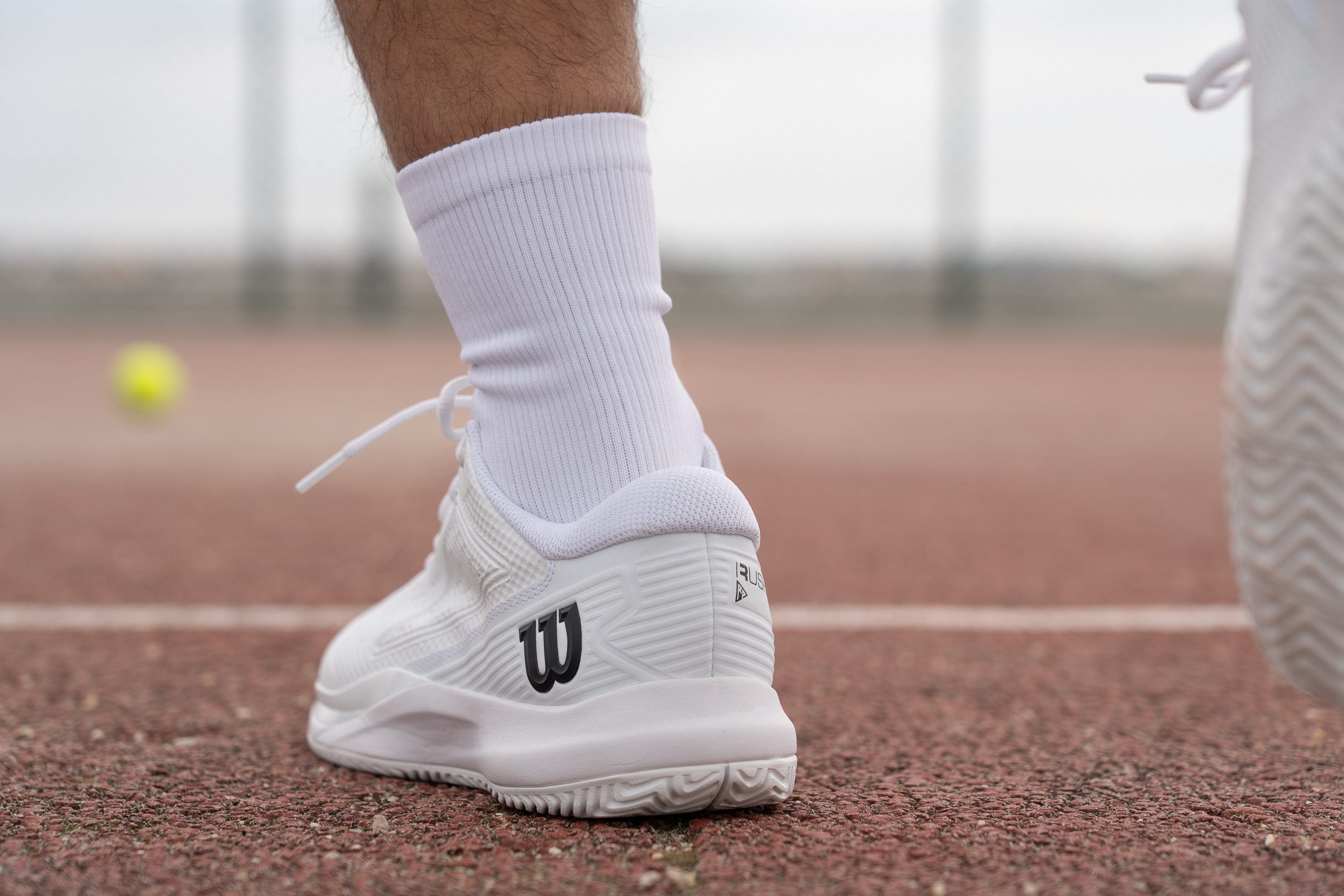
| Rush Pro Ace | None |
Laces
This Wilson shoe uses pretty basic laces but they get the job done. The only trouble is that they are not protected at all and accidental court slashing can easily result in damage.
